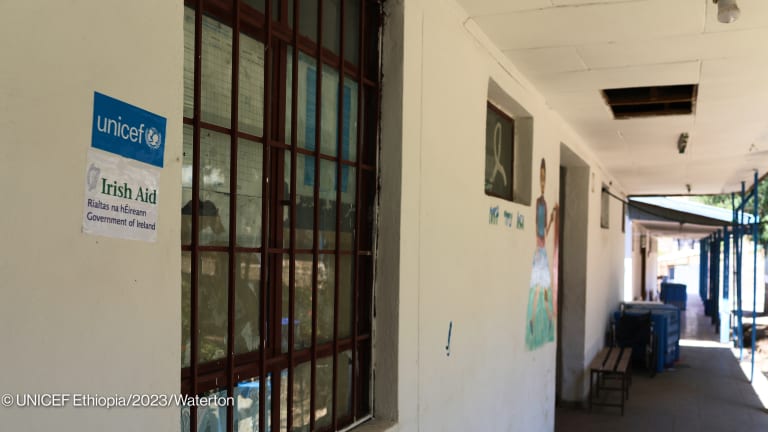UK aid: A primer
In 2021, the United Kingdom spent £11.4 billion on development aid — accounting for 0.5% of its gross national income. We looked into the data to understand how it spent its money.
In November 2020, the United Kingdom announced that it will temporarily reduce its annual aid spending — from 0.7% to 0.5% of its gross national income. The effect was immediately seen across sectors and geographies. But even after rounds of budget cuts, the U.K. remains one of the largest sources of aid among the Development Assistance Committee member countries. In this article, we take a deep dive into U.K. aid to understand how and where it spends its money — what are its priorities and how they have changed throughout the years. We used the Statistics on International Development and the Organisation for Economic Co-operation and Development as primary sources. All figures were adjusted to 2021 prices — allowing us to make year-on-year comparisons with respect to fluctuations in inflation rates. What does the U.K. spend on? Preliminary data shows that the U.K.’s official development assistance was worth $15.7 billion in 2022, or 0.51% of its GNI — just behind the United States, Germany, Japan, and France. But while this is up 6.7% in real terms from 2021, the increase was heavily driven by domestic refugee costs rather than overseas development spending. Around 28.9% of the U.K.’s ODA in 2022, worth $4.5 billion, went to expenses for refugees on its soil, compared to 2021, when it was worth just $1.2 billion, or 7.8% of the total. Trends in UK aid Before the aid cuts, the U.K. saw a steady increase in ODA spending. From £10.2 billion in 2012, its total aid amounted to £15.7 billion in 2019 — a 53.7% increase. From 2013 onwards, the U.K. consistently hit the 0.7% ODA-to-GNI goal set by the United Nations and gained a reputation of being a development aid superpower. In 2015, the 0.7% target became a domestic legal obligation when its government passed the International Development (Official Development Assistance Target) Act. A year after the COVID-19 pandemic and the government’s sudden pivot in aid spending, the U.K. recorded a significant dip in total ODA, with £11.4 billion — 23.1% less than the previous year. How is the money disbursed? The Foreign, Commonwealth & Development Office acts as the U.K.’s lead agency for international development. It was formed through the merger of the Foreign & Commonwealth Office and the Department for International Development in 2020. FCDO accounted for 71.6% of the U.K.’s ODA in 2021, worth £8.2 billion. This is a quarter less than the collective ODA of DfID and FCO in 2020, worth £10.9 billion. It also represents a 29.4% drop over five years when compared to the collective ODA of DfID and FCO in 2017 — which was worth £11.6 billion. The rest of the money, worth £3.2 billion, came from other government agencies — a 17.1% drop from their collective disbursement in 2020. The Home Office was the top spender among the non-FCDO agencies, with £1 billion. This is 69.8% more than the previous year. The Home Office is the U.K.’s lead agency for immigration, counter-terrorism, and other areas around security. The Department for Business, Energy & Industrial Strategy ranked next, with £935 million — 9.1% less than the previous year. A significant portion of ODA, worth £426 million, also came from the Conflict, Stability, and Security Fund — a cross-government fund launched in 2015 focusing on security and peacekeeping. Its spending was down 22.3% from 2020. Bilateral vs multilateral spending The largest portion of U.K. ODA is channeled bilaterally. In 2021, bilateral ODA was worth £7.1 billion — 62.6% of the total — while multilateral ODA was worth £4.3 billion — 37.4% of the total. It was the exact same proportion when compared to five years ago — or in 2017 — when bilateral ODA was worth £9.5 billion and spending on multilaterals was at £5.7 billion. Based on OECD preliminary data, the U.K.’s bilateral spending rose to 71.6% of the total ODA in 2022, with $11.3 billion (£8.8 billion in 2021 prices). Among the multilaterals, the European Commission was the biggest recipient of ODA in 2021, with £684 million — 16% of the U.K.’s total multilateral ODA. Despite the U.K.'s decision to leave the European Union, it still has ongoing commitments based on agreements made in previous years and continues to fund them. However, those commitments are falling. The contribution in 2021 was only a little more than half the £1.2 billion ODA that EC received in 2020. The International Development Association ranked next, with £670 million. Then the European Development Fund, with £635 million; The Global Fund to Fight AIDS, Tuberculosis and Malaria, with £380 million; and the Green Climate Fund, with £281 million. What are the geographical and sectoral priorities? Around £3.4 billion of the U.K.’s ODA in 2021 went to country-specific recipients. Of this amount, £1.7 billion went to Africa and £1.3 billion to Asia. The remainder was divided among other regions. Based on OECD data, the rest of the U.K.’s bilateral ODA, worth $5.1 billion (£3.7 billion), went to projects in multiple countries from different regions. OECD labels it as “Developing countries, unspecified.” Afghanistan was the biggest among them, with £187.2 million — 19.4% less than the previous year. Nigeria ranked next, with £140.1 million. Then Pakistan, with £127.8 million; Ethiopia, with £119.8 million; and Yemen, with £114.4 million. Among sectors, 14.7%, worth £1.1 billion, went to refugee costs. This is 63.2% more than in 2020. Health followed, with £970 million — 40.5% less than the previous year. Health was the top recipient sector in 2020, with £1.6 billion. Other priorities include economic infrastructure and services, with £820 million; government and civil society, with £773 million; and humanitarian aid, with £743 million. Meanwhile, a further £795 million went to multisectoral projects. Try out Devex Pro Funding today with a free five-day trial, and explore funding opportunities from over 850 sources in addition to our analysis and news content.
In November 2020, the United Kingdom announced that it will temporarily reduce its annual aid spending — from 0.7% to 0.5% of its gross national income.
The effect was immediately seen across sectors and geographies. But even after rounds of budget cuts, the U.K. remains one of the largest sources of aid among the Development Assistance Committee member countries.
In this article, we take a deep dive into U.K. aid to understand how and where it spends its money — what are its priorities and how they have changed throughout the years.
This story is forDevex Promembers
Unlock this story now with a 15-day free trial of Devex Pro.
With a Devex Pro subscription you'll get access to deeper analysis and exclusive insights from our reporters and analysts.
Start my free trialRequest a group subscription Printing articles to share with others is a breach of our terms and conditions and copyright policy. Please use the sharing options on the left side of the article. Devex Pro members may share up to 10 articles per month using the Pro share tool ( ).
Miguel Tamonan is a Senior Development Analyst at Devex, where he analyzes data from public and private donors to produce content and special reports for Pro and Pro Funding readers. He has a bachelor’s degree in Political Science with a Major in International Relations from the Polytechnic University of the Philippines.








